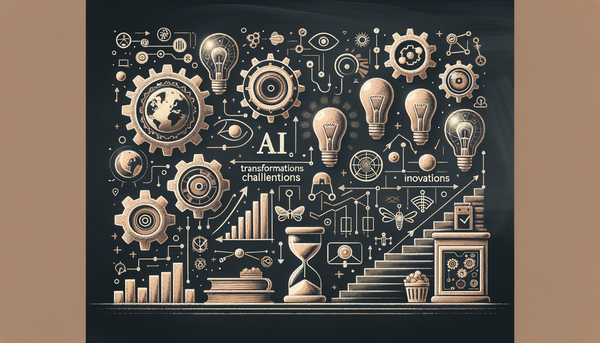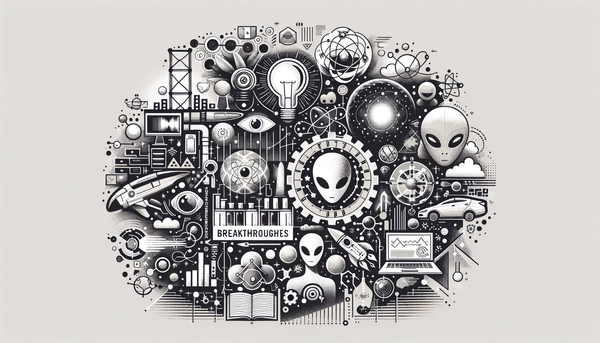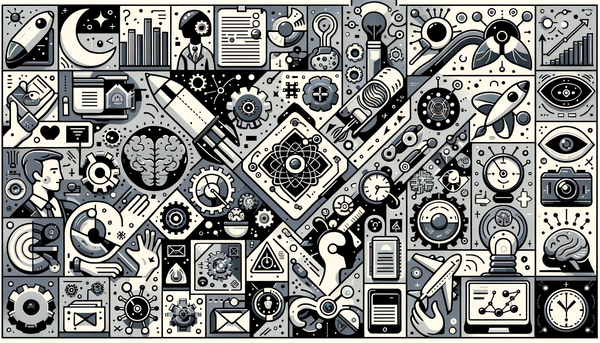Kyndryl and Microsoft's AI-Powered Healthcare Revolution
This article explores how artificial intelligence is transforming diverse domains—from revolutionizing healthcare with groundbreaking collaborations like Kyndryl and Microsoft, to reshaping creative storytelling and redefining the boundaries of digital photo editing. It delves into recent developments such as the delay of Apple’s AI-enhanced Siri, examines where AI truly excels, and offers insights into leveraging AI as a competitive advantage in today’s intelligence age.
AI Collaboration in Healthcare: Transforming Clinical Workflows and Documentation
The integration of AI across various aspects of healthcare is not just an incremental upgrade—it is a radical transformation of how healthcare providers operate. The collaboration between Kyndryl and Microsoft has sparked conversations about the future of healthcare documentation and clinical workflows. This partnership is reimagining the way patient data is handled, aiming to reduce administrative burdens that have long plagued the healthcare sector.
At its core, the alliance promises to deliver advanced AI tools that can automate documentation, improve accuracy in clinical records, and even assist in diagnostic processes. This move is especially significant in an era where the demand for precision and efficiency in healthcare is paramount. The integration of AI into daily healthcare routines is supported by research that outlines how machine learning algorithms can assist in filtering out noise from important patient data, thereby enabling clinicians to focus on critical decision-making.
In this context, it is useful to recall Michael Dell’s insight:
“We are in the early days of an AI revolution. In the long run, AI will change the very nature of how humans work and interact with machines.”
Such statements underscore the potential long-term impact of AI beyond mere automation, suggesting a paradigm shift in the human-machine relationship.
Beyond the immediate application in healthcare documentation, AI’s role extends to streamlining complex processes that have traditionally been labor-intensive. By leveraging advanced natural language processing and computer vision technologies, the new system promises more than just administrative efficiency—it heralds an era where data-driven insights can lead to better diagnosis and improved patient outcomes.
This new wave of healthcare innovation can be contrasted with other recent developments in the industry. For instance, the AI-powered innovations described in articles like “Meet Microsoft Dragon Copilot: Your new AI assistant for clinical workflow” illustrate the broad spectrum of AI applications transforming healthcare. Similarly, insights from “AI Innovations Transforming Our World” and “3 New Ways AI is Revolutionizing Nature Conservation and Healthcare” offer a glimpse into the expansive potential of AI across sectors.
An essential point to consider is that the success of these collaborations relies heavily on robust data security and patient privacy protocols. As healthcare systems become increasingly digitized, ensuring that personal medical information is protected becomes as important as the technology itself. Current research emphasizes that ethical AI practices and transparent data governance frameworks are critical for long-term success.
The Limitations of AI in Photo Editing: When Technology Meets the Art of Photography
Artificial intelligence has made impressive strides in various creative domains, including photo editing. However, as some experts argue in the discussions featured by Fstoppers, AI isn’t always the perfect solution for image enhancement and artistic modification. While many celebrate the potential of AI in automating mundane processes, the nuanced art of photo editing often defies straightforward algorithmic interpretation.
Photo editing requires a deep understanding of context, style, and aesthetics—elements that are often subjective and difficult to quantify. AI tools can offer rapid fixes like automated exposure corrections or background removals, but they may misinterpret an image's intended artistic expression. Sometimes, the human touch is crucial in capturing the subtle emotions and storytelling aspects of a photograph.
For instance, complex editing decisions that involve balance, color harmony, and the interplay of light and shadow can be beyond the reach of current AI algorithms. Image editing is as much an art as it is a technical process. This challenge highlights a fundamental point in AI research: while AI excels at processing large datasets and recognizing patterns, it still struggles to grasp the deeper layers of human creativity.
The notion that "artificial intelligence is the science of making machines do things that would require intelligence if done by humans," as John McCarthy once said, reminds us of the inherent complexities in attempting to encode subjective human experiences into binary code. The debates surrounding this topic reveal that AI’s utility in photo editing is best when used as a complement to human ingenuity rather than a replacement.
Furthermore, the rapid development of AI tools in creative endeavors has sparked a lively dialogue among photographers, designers, and technologists. The iterative advances in machine learning continue to offer improved results; however, the quest for perfection in creative outputs might always remain a domain where human expertise reigns supreme. If one views the evolution of photography through a historical lens, it becomes clear that every technological advancement—from the invention of film to the digital era—has faced similar skepticism before being fully embraced.
Despite these challenges, there is substantial scope for synergy. Expert users can combine the computational prowess of AI with their creative instincts, effectively enhancing the final output while still preserving the artistic integrity of the image. The key lies in using these technologies as tools rather than turnkey solutions, ensuring that human insight remains at the frontier of creative expression.
Apple’s AI-Enhanced Siri: Innovation, Setbacks, and the Pursuit of Perfection
In the competitive tech landscape, innovation is often punctuated by interruptions and setbacks. Recent news about Apple's AI-enhanced Siri facing further delays has sparked discussions about the challenges that come with integrating advanced AI features into well-established platforms. Despite a long-promised future of a more responsive and intuitive digital assistant, Apple continues to encounter hurdles in fully realizing its AI ambitions.
The delay in launching the AI-enhanced Siri is a reminder of the technological intricacies involved in developing state-of-the-art AI functionalities. Apple, known for its meticulous attention to detail, is evidently taking extra steps to ensure that the new version of Siri meets the high-quality standards expected by its global user base. This cautious approach, while frustrating to some, underscores the complexity of integrating AI into products that impact millions of lives daily.
Analyzing the situation, it is clear that the challenges are not solely technical. User privacy, data security, and the maintenance of ecosystem integrity all contribute to the decision-making process. Balancing innovation with consumer trust and corporate responsibility is a delicate task that requires both patience and precision. This narrative is explored in depth in discussions such as those found in “Apple Struggles to 'Convert' AI Features: What to Know”, where the intricacies of integrating AI in consumer devices are detailed.
Moreover, the evolution of Siri is reminiscent of the broader journey that many AI-powered systems undergo—from early optimism through rigorous testing, iteration, and eventual maturation. In many ways, this delay exemplifies the realistic path of innovation, where every breakthrough is hard-earned and comes after overcoming significant obstacles.
Looking closer, one can appreciate that every technical setback serves as a learning opportunity. The deliberate pace at which Apple is moving forward may eventually result in a digital assistant that not only performs routine tasks but also anticipates user needs in a more human-like manner. This ambitious goal places Apple in the forefront of the digital revolution while simultaneously reminding us of the challenges inherent in harnessing AI at scale.
It is imperative to recognize that such delays are not symptoms of failure but rather indicators of a commitment to excellence. By ensuring that every element of the design meets stringent benchmarks, companies like Apple secure user trust—a currency that is invaluable in today's digital age.
AI in Creative Storytelling: The Case of George Costanza's Marine Biologist Tale
When we think about artificial intelligence, creativity is often seen as one of its most fascinating frontiers. A recent playful demonstration of AI’s potential in recreating narratives—specifically, transforming George Costanza’s iconic marine biologist story into what some have called a cinematic masterpiece—showcases AI’s foray into creative storytelling.
This development, reported by Barstool Sports, highlights a delightful aspect of AI: its ability to reinterpret and remix cultural references in surprising ways. The re-imagined narrative is not just a gimmick; it represents a broader trend in the creative industries where AI tools assist writers, filmmakers, and content creators in generating unique and engaging stories.
What makes this instance so compelling is that it blurs the line between algorithmic processing and human creativity. While some skeptics might argue that machines lack the soulful depth of human expression, others see this emerging capability as a complementary evolution. The fusion of AI technology with creative storytelling can serve as a powerful tool for artists, allowing them to bridge gaps between traditional narrative forms and modern, data-driven storytelling techniques.
An anecdote to consider here is how creative minds have long drawn inspiration from unexpected sources—sometimes even from chance encounters or serendipitous moments captured in life. AI, in its own way, is now adding to this rich tapestry by offering novel perspectives and interpretations of well-known cultural moments.
The transformation of George Costanza’s marine biologist story isn’t just a quirky demonstration—it symbolically represents the evolving narrative of creative industries. In the words of Elon Musk, whose commentary on AI’s future is evocative and cautionary,
"AI will be the best or worst thing ever for humanity."
This duality is at the heart of the debate—AI is both a transformative ally and a challenge to existing creative norms.
Moving forward, the creative synergy between humans and AI is likely to deepen, revealing increasingly sophisticated portfolios of collaborative works. The importance of this trend cannot be overstated; it is redefining what it means to tell a story in the digital age, where algorithms may one day become co-authors alongside celebrated human talents.
Winning in the Intelligence Age: Strategies for Leveraging AI-Driven Advantage
As the age of artificial intelligence accelerates, businesses and individuals alike face the dual challenge of keeping pace with technological evolution while ensuring that human insight remains central to their strategies. The guide to achieving an AI-driven advantage—such as that outlined in “Meet Microsoft Dragon Copilot: Your new AI assistant for clinical workflow” and similar updates on AI innovations—offers a roadmap for navigating this complex landscape.
The art of winning in the intelligence age is not simply about deploying the latest AI tools; it is about understanding how these tools can enhance decision-making, ignite creativity, and streamline operations. Successful integration of AI requires a deep appreciation of both the technology and the human factors that drive innovation. Companies are increasingly adopting hybrid models where AI augments human performance rather than replacing it entirely.
To truly harness the potential of AI-driven strategies, businesses must invest in robust infrastructure, cultivate a culture of continuous innovation, and adopt ethical frameworks that prioritize transparency and accountability. The journey toward an AI-enhanced future is fraught with challenges—ranging from technical integration issues to regulatory hurdles—but the rewards, particularly in enhanced efficiency and market competitiveness, are significant.
An important lesson from this evolution is that timing and strategy are paramount. Companies that adapt quickly, yet thoughtfully, can secure a competitive edge in rapidly evolving markets. In the dynamic world of consumer goods and beyond, leveraging AI is less about following trends and more about crafting a vision for sustainable innovation.
For instance, consider industries like healthcare, retail, and even content creation, where AI is already beginning to unlock unprecedented opportunities. The strategies employed in these sectors often involve cross-disciplinary collaboration, merging insights from data scientists, domain experts, and creative professionals. Such integrative approaches ensure that while AI drives efficiency, it does not undermine the nuanced expertise required in each field.
What remains clear in the age of digital transformation is that AI’s promise goes far beyond simple automation. It is a tool that, when used judiciously, can enable organizations to harness vast amounts of data, derive actionable insights, and cultivate a truly competitive intelligence edge. In this emerging landscape, those who master the interplay of technology and human ingenuity will likely lead the pack.
This insight echoes a broader cultural shift where the future of work and innovation is increasingly interdependent. From the transformative changes in healthcare to the creative revolutions in digital storytelling, the onus is on us to leverage AI not as a panacea, but as a sophisticated instrument in the symphony of progress.
Looking Ahead: Embracing the Multifaceted Impact of AI
The narrative of artificial intelligence is still in its early chapters, yet it is already rewriting the rules across a spectrum of industries. From the transformative power of AI in healthcare to the nuanced debates surrounding its role in creative fields like photo editing and storytelling, we are witnessing a period of dynamic evolution.
As we continue to explore these advancements, it is crucial to maintain a balanced perspective. AI is not a magic bullet that solves every problem instantly—it is a powerful catalyst that, when properly integrated, can amplify human potential. The path ahead involves continuous learning, ethical adaptation, and above all, a harmonious collaboration between machine efficiency and human creativity.
One might reflect on the words of those pioneering thought leaders in the tech space. As eloquently stated by John McCarthy, understanding AI involves appreciating its ability to mimic tasks that traditionally required human intellect. This ongoing dialogue, enriched by diverse perspectives—from rigorous academic research to entrepreneurial insights—ensures that we remain critically engaged with the evolving capabilities of these technologies.
Looking toward the future, the strategic integration of AI will likely spur even more interdisciplinary collaborations. Whether through enhancing healthcare systems, innovating in creative sectors, or developing new business strategies, AI holds the promise of redefining the boundaries of what is possible. The collaboration between companies, as well as the fusion of human and machine intelligence, signals a transformative journey that is more iterative than revolutionary.
To stay informed about these rapid developments, enthusiasts and industry professionals alike are encouraged to explore additional insights available at AI.Biz, such as the detailed overviews in “Apple Struggles to 'Convert' AI Features: What to Know” and “AI Innovations Transforming Our World”. Each of these articles contributes a unique facet to the growing narrative of AI's role in reshaping our world.
In closing, embracing the multifaceted impact of AI requires not only technical insight but also an appreciation for its broader cultural and ethical implications. This synthesis of ideas is what will ultimately drive innovation, ensuring that as we build smarter systems, we also nurture a smarter society.




